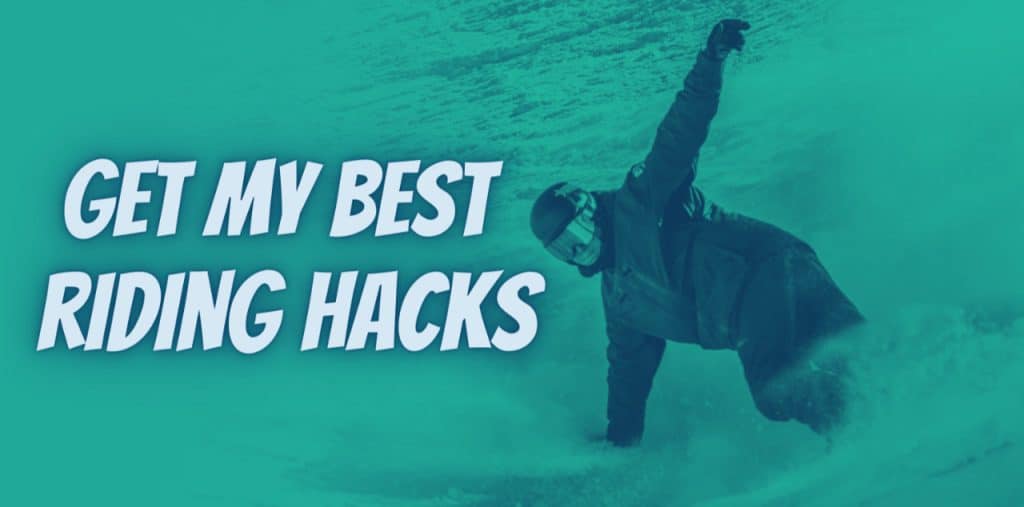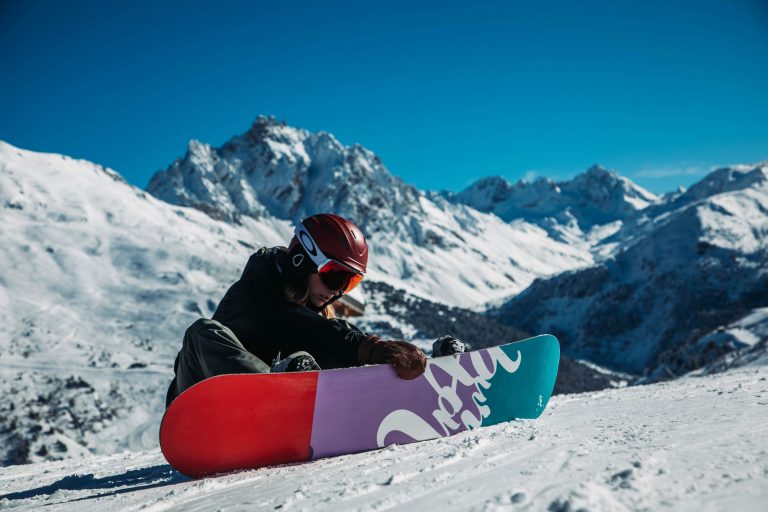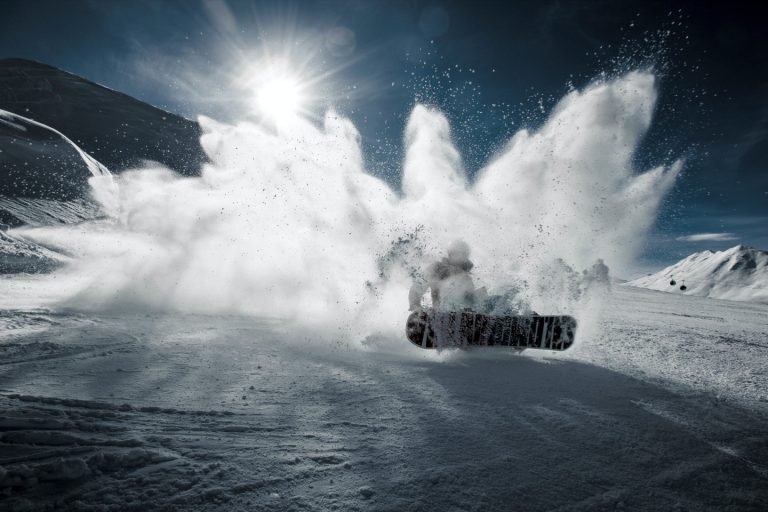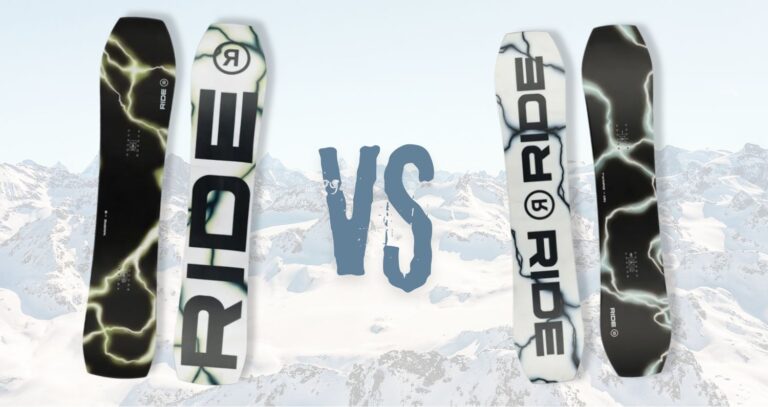As someone who lives and works in the mountains, I snowboard a lot! For the most part, I've been lucky with my equipment, only having to replace my boots and board when they reach the end of their natural life. I ride a lot! And normally, a board will last the whole season before I start thinking about getting a new one.
Riding a few times a week over the 5 month winter season takes a toll on your equipment. When April comes around, I can start to feel my board is getting a little tired. Speaking to my friends that also ride a lot they seem to agree that after about 3 ½ months of full-on riding it is time to start looking for a new board.
On average a snowboard will last for 75-90 days of riding. After that, the board will still be fine to ride but maybe will start to feel a little tired and lifeless.
More advanced riders ride faster and put more force through their board, causing it to wear out quicker. So if you are just starting and learning to snowboard, your board will probably last you about 20% longer.
How to know when to replace a snowboard?
It can be difficult to know when your snowboard needs replacing because it all depends on how you use and care for the board. If you are an occasional rider, then a cheap snowboard will last longer than if you were an expert who rides every day.
Also, a more aggressive/heavier rider will start to notice their board feeling a little tired sooner than a beginner/lighter rider. Here are some things that might indicate that your board is coming towards the end of its life:
Snowboards are built to have ‘pop' this is the term given to the energy and rebound that the board generates and helps you give life to your riding. Pop gives your lollies extra height, and gives you more speed out of turns. If the board feels dead or lacks this pop, then that is a sign it needs replacing.
Another thing to look for is the board's rocker or camber wearing out. Camber is the curve of the board that helps it glide across the snow, rocker is a feature that can be either positive or negative depending on what you are looking for. Rocker gives your board more pop and increases control while camber makes it easier to turn but lacks instability when riding straight.
You can see if the rocker/camber of your board is wearing out by lying the board flat on the floor. A new board will have the base lifted off the floor between the contact points, creating a gap between the base and the floor. After a time, and with lots of usage this gap will start to close up.

If you have noticed any changes in these features, then it may be time to replace your old deck with a new one!
Making your board last longer
You can prolong the life of your board by correctly maintaining it. If you take care of your boards by waxing them regularly and storing them properly they will last longer, but if not they are likely to degrade faster than those who do put effort into maintenance. Your maintenance list should include:
Keep your snowboard in a dry place.
If you store your board in a place with any moisture, you may find your edges are rusty next time you go to use it. Before storing your board away, it's a good idea to give it a good layer of wax but not scrape it. This leaves a protective layer of wax over the base and edges and stops any moisture from getting in.
Repairing the base
Take care of any major damage to the board, such as dings and scratches. Not only will this help your board run faster, but it can also help it last longer. Core shots which are holes that go through the base of the board can let in water and cause damage to the core materials
The type of riding you do will also dictate when it is time for an upgrade: if you are looking to ramp up your game and progress from beginner status, then obviously a cheap deck isn't going to cut it! You'll be needing something that has been designed especially for what you want out of your equipment. For example; someone who does lots of freestyle tricks may need a softer flexing board than those who prefer cruising around groomers or taking off jumps or doing rails.
Tuning the edges
Regularly tuning your edges will help keep them sharp longer. Edges that become too dull and rounded take a lot of work to get them sharp again, meaning a lot of the edge material needs to be filed off.
It is always worth checking out how much life is left in your snowboard before hitting up the slopes or resort. You can do this by giving the board a good check over, looking at things such as:
metal edges that are worn down; base wear/rocker drag-out on one side of the board but not both; stiff flexing when not being used etc. All these could indicate that there are issues within your board that need fixing after prolonged use.
Ways you can break your Snowboard!
Although rare, there are many ways in which you can break a snowboard. These pretty much all involve freestyle or off-piste riding. So if you want your board to last longer…play it save and stay on the groomers and on the ground.
Snapping the board.
I have managed to do this twice, once when I was free riding and hit a good-sized rock mid-turn and once trying a new trick off a jump and landing really heavy on the tail of the board. The other common way to snap a board is landing heavily on rails in a boardslide.
Hitting rocks!
Although hitting a rock can definitely break your board, oftentimes the damage is not fatal. A hole in the middle of the base is not too serious and can be repaired if the damage is near the edge or the sidewall this is a little more serious so always get your board checked out at your local snowboard shop before either continuing to ride on it or throwing it in the trash!

Cracking the edges
Although you would be pretty unlucky to snap your board, it is common to crack the edges doing board slides. This is not fatal for the board but the crack can open up over time.
The board delaminating
This is when the different layers that make up the board start to peel apart and normally mean the end of life for your board! Often this can be down to a manufacturing fault, in which case you should be covered by the warranty, but it can also be due to base damage going unprepared and water getting into the core.
Are newer boards better?
Even if your old board is in pristine condition it may still be worth upgrading. Recent innovations in snowboard design and materials have made it much easier to improve your riding and find a board that better suits your style.
Hybrid rocker profiles, Magna Traction edges, volume shifted shapes, 3d shapes, all of which didn't exist 10 years ago, meaning you have way more options when picking a board that suits your riding.
Snowboard design is constantly evolving and this means newer boards are better than those that were released years ago – even if they have yet to be ridden! For example; while in 1990 stiffness was seen as an advantage for snowboards, these days, manufacturers use all sorts of different materials which make their boards softer or harder according to rider preference.
This continual process has allowed us to grow our skills at faster rates because we can do so with equipment designed specifically for what we want out of it. Simply put: more expensive doesn't necessarily mean “better” but you will definitely find that some features work better on certain decks!




